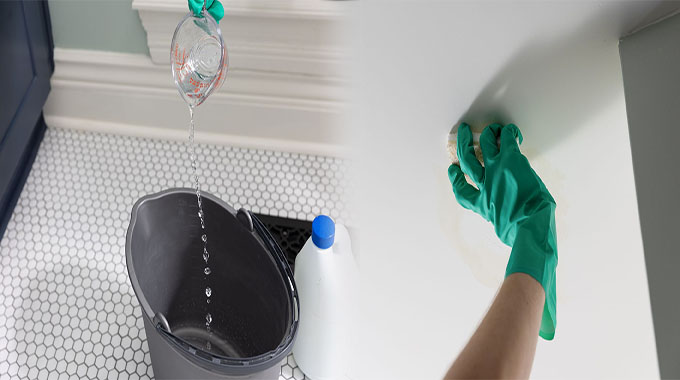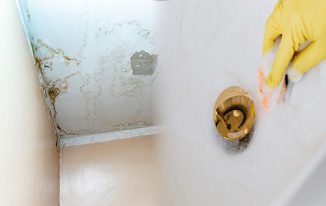Water stains on ceilings can be unsightly and indicate a potential issue with water damage. Removing these stains promptly and safely is essential to maintain the aesthetics and structural integrity of your home. While there are many DIY remedies available, using professional-grade products ensures effective stain removal without causing further damage. In this article, we will explore some professional-grade products specifically designed to safely remove water stains from ceilings.
1. Stain-Blocking Primer
Before attempting to remove the water stains, it’s crucial to prepare the surface properly to prevent future discoloration. A stain-blocking primer is an excellent choice for this purpose. These primers are specifically formulated to cover and seal water stains, preventing them from bleeding through subsequent paint layers. Apply the stain-blocking primer directly over the water stains, following the manufacturer’s instructions, and allow it to dry completely before proceeding with painting or further repairs.
2. Oxalic Acid-Based Stain Removers
For more stubborn water stains, professional-grade stain removers containing oxalic acid can be highly effective. Oxalic acid is a powerful cleaning agent that can break down and remove various stains, including water stains, without damaging the ceiling surface. These products usually come in powdered form and need to be mixed with water according to the manufacturer’s instructions. Apply the solution to the stained area using a sponge or brush, gently scrubbing until the stain is lifted. Rinse the area thoroughly with clean water and pat it dry.
3. Enzyme-Based Cleaners
Enzyme-based cleaners are another professional-grade option for removing water stains from ceilings safely. These cleaners utilize enzymes to break down and eliminate organic substances, including water stains caused by mold or mildew. Enzyme-based cleaners are generally non-toxic and environmentally friendly, making them a safe choice for indoor use. Spray or apply the cleaner directly onto the stained area and let it sit for the recommended duration. Use a clean cloth or sponge to gently blot and lift the stain. Repeat the process as needed until the stain is completely gone.
4. Mildewcide Treatments
In cases where water stains on the ceiling are accompanied by mold or mildew growth, it’s crucial to address the underlying issue and prevent further contamination. Professional-grade mildewcide treatments can be applied to kill any remaining mold or mildew spores and inhibit their future growth. These treatments typically come in spray or liquid form and should be applied according to the manufacturer’s instructions. It’s important to use appropriate personal protective equipment (PPE) when working with mildewcide treatments to ensure safety.
5. Moisture Absorbers and Dehumidifiers
To prevent water stains from recurring, it’s essential to address the root cause of the moisture issue. Using moisture absorbers or dehumidifiers in areas prone to excess humidity can help maintain optimal moisture levels, preventing condensation and subsequent water stains on the ceiling. These devices work by removing excess moisture from the air, creating a drier environment and reducing the likelihood of water damage and stains.
Removing water stains from ceilings safely requires using professional-grade products specifically formulated for effective and safe stain removal. Stain-blocking primers, oxalic acid-based stain removers, enzyme-based cleaners, mildewcide treatments, and moisture control solutions are all effective options to consider. Remember to carefully follow the manufacturer’s instructions for each product to ensure proper usage and safety.
If you’re uncertain about tackling a water stain removal project on your own, it’s always advisable to consult with a professional for guidance. They can assess the extent of the damage and recommend the best course of action to restore your ceiling to its former pristine condition.














